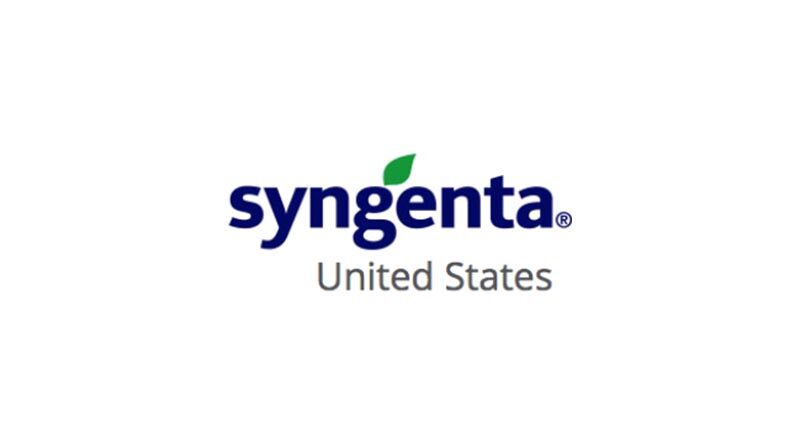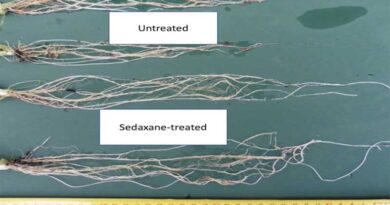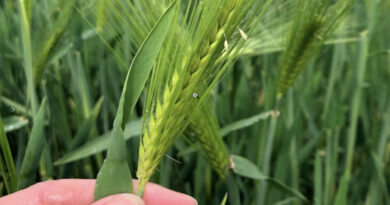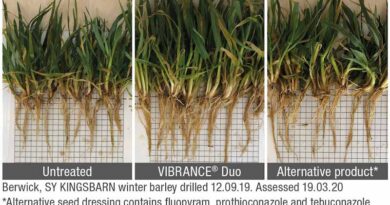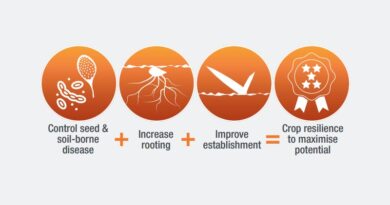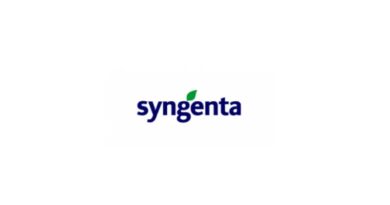New fungicide in development shown to boost wheat yield by more than 1 t/ha in trials
11 June 2021, UK: A new foliar fungicide being developed in the UK by Syngenta has been found in field trials to deliver more than 1 t/ha in extra wheat yield, as well as yield increases in barley even in the absence of disease, the company’s experts have revealed.
The new active ingredient, AdepidynTM Technology, is already registered in 29 countries outside the EU, including in North and South America, says Syngenta UK fungicide portfolio manager, David Ranner. Now, it has also been submitted for UK registration, he says, initially for use in winter and spring crops of wheat, barley, oats, triticale and rye.
Also Read: Training Programme on Preservation of Fruits and Vegetables Concludes at PAU
“The AdepidynTM Technology molecule is an SDHI fungicide but is in a new group within the existing class of SDHIs,” Mr Ranner explains. “The molecule contains distinct parts. One part is associated with long-lasting activity. Another part is associated with potency against key diseases.
“In particular, trials have shown that AdepidynTM Technology has delivered a step change in potency against the key diseases of Septoria tritici in wheat and net blotch and Ramularia in barley. It has also been shown to provide robust potency against Rhynchosporium in barley, and against Fusarium head blight in wheat.”
Syngenta fungicide technical manager, Jason Tatnell, says as well as the AdepidynTM Technology molecule having been shown to deliver high potency against Septoria tritici in the laboratory, it has also given high levels of control in field trials.
“Trials have shown that an AdepidynTM Technology treatment applied at the important flag leaf or T2 timing produced clearly visible reductions in Septoria compared with alternative SDHI/azole combinations, including newer chemistry,” Mr Tatnell explains. “More importantly, this super-power performance has been reflected in increased yields.
“In the high Septoria pressure season of 2019, trials showed that T2 applications of an AdepidynTM Technology treatment delivered an average of an extra 1.2 t/ha over a range of other SDHI/azole combinations. In 2020, it also delivered an average of an extra 0.55 t/ha compared with newer SDHI/azole chemistry across a range of doses.
“Research by Harper Adams University College in 2020 showed that a T2 application of an AdepidynTM Technology treatment also gave significant reductions in Fusarium head blight and in DON mycotoxin.”
In barley, Mr Tatnell says field trials have also shown that T2 applications of an AdepidynTM Technology treatment have given clear reductions in net blotch, Ramularia and brackling.
“Yield data from barley trials comparing an AdepidynTM Technology treatment with an alternative leading SDHI/azole combination showed it gave an average of an extra 0.4 t/ha – rising to an extra 0.7 t/ha on sites where disease pressure was high.
“Even in the absence of disease in barley, field trials still showed an average 0.4 t/ha yield uplift over other SDHI/azole combinations.
“Other field research in wheat has also shown the stamina aspect of AdepidynTM Technology – in terms of its ability to provide long lasting green leaf retention, which is the driver for yield,” Mr Tatnell concludes.

